When I first gave you a peek at my garden in May, things were looking a little sparse… I had just drawn up a plan for the next season, pulled out most of my winter and spring crops, and turned over the soil with freshly made compost. My onions and garlic were still a couple weeks away from harvest. My summer crops had been started in pots and were waiting to be transplanted. June was a busy month of digging, mulching, and building new trellises. After adding more (and more) tasks to my fiancé’s ever-growing “honey do” list, I thought we’d never get anything in the ground in time for summer.
And now… It’s amazing what can happen in just two months!
Welcome to the wild forest also known as my food garden!
This is a shot looking down at the main vegetable plot. In the foreground are five Italian pepper plants — I’ve got five more behind those, out of frame, and another two in the raised bed below.
In the middle is a box of summer salad greens — Red Leaf amaranth, mizuna, Perpetual Spinach chard, and a couple of Asian mustard greens just starting.
The billowing plant in the upper right corner is Victoria rhubarb, and to the left of that is a bed dedicated to Patisson Strie Melange squash. I had six plants growing in that bed until one died a couple weeks ago… probably for the better, as the vines are so robust right now, I don’t think there would’ve been room for that sixth one!
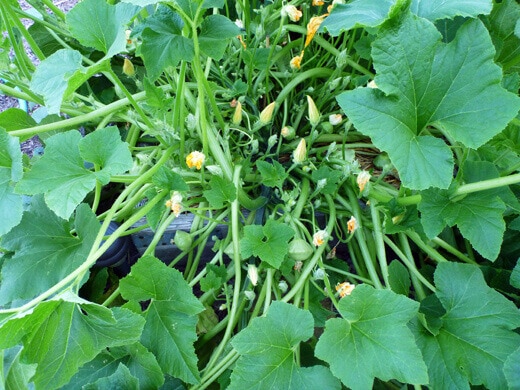
A close-up of my largest plant, which I’ve nicknamed the “Overachiever.” This guy sprung up days before all the other seeds and was three times the size of its fellow squash seedlings by the time I put it in the ground. It grew so big in the first few weeks that its stem had split open under the weight and size of its leaves. I had to stake it down to keep the fledgling from flopping in the breeze, potentially snapping its stem entirely.
Needless to say, the split didn’t slow its growth at all and its vines are starting to sprawl over to the next bed. I see a lot of squash in my very near future!
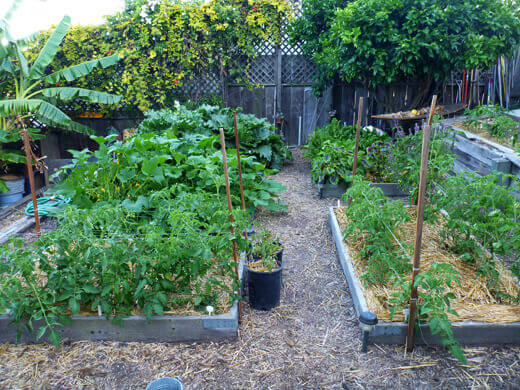
A side view of the main vegetable plot. In front are two beds and two black buckets of tomato plants (14 plants in all), staked using the Florida Weave method.
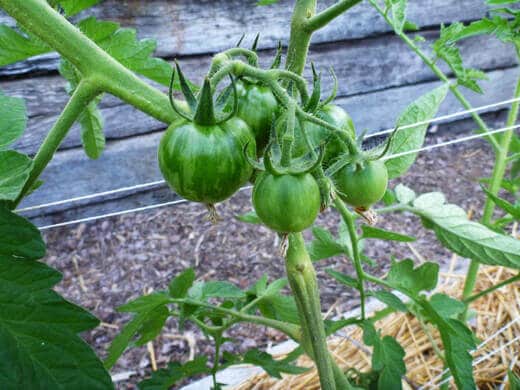
My Black Cherry tomatoes. I have seven varieties of tomatoes growing, but these have grown the quickest and seem to be the most productive so far.

The new cucumber trellis, with Poona Kheera, Chinese Yellow, and Japanese Summer Top varieties climbing up our repurposed, vintage wrought-iron gates.
Lines of cotton twine run from the top of the gates to the top of the whole frame, which is made of aluminum pipe. It’s a permanent trellis that will have cucumbers, beans, peas and other climbing plants rotating through it each year.
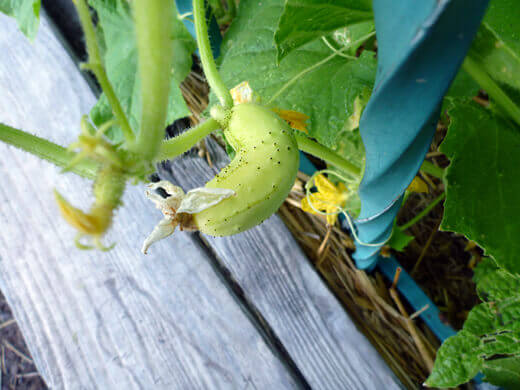
The first Poona Kheera cucumber coming out. So cute!
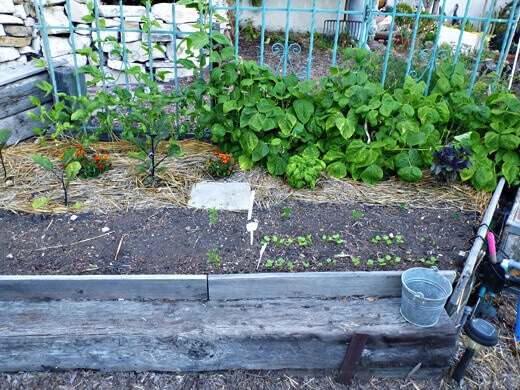
Our other trellis, which has a small row of Chinese Red Noodle beans vigorously climbing up the left side. The seedlings had a shaky start and the leaves were yellowing to the point where I thought they wouldn’t make it; but they came back and most of them are producing healthy green leaves with vines that seem to race up the twine a few more inches each day.
The trellis maxes out at six feet and one of the vines has topped this and then some — I let it climb horizontally along the top bar. Still no blooms though, even though my other bean plants to the right — Dragon Tongue bush beans — have been producing the sweetest pods for the last couple weeks. Will the Chinese Red Noodle be a bust this year? We shall see…
Also in the mix above are Ronde de Valence eggplants, Cinnamon basil, Purple Petra basil, and newly sowed White Hailstone and Purple Plum radishes (those little sprouts in front).
I’ve left space in front of the eggplants for Chantenay Red Core carrots, which I started indoors and will be transplanting soon. Plenty of garden gurus will say you shouldn’t transplant carrots, lest you want a mutant-shaped root that had been disturbed during the transplant process. But since I have clay soil that’s still improving, I’m used to mutant-shaped carrots anyway.
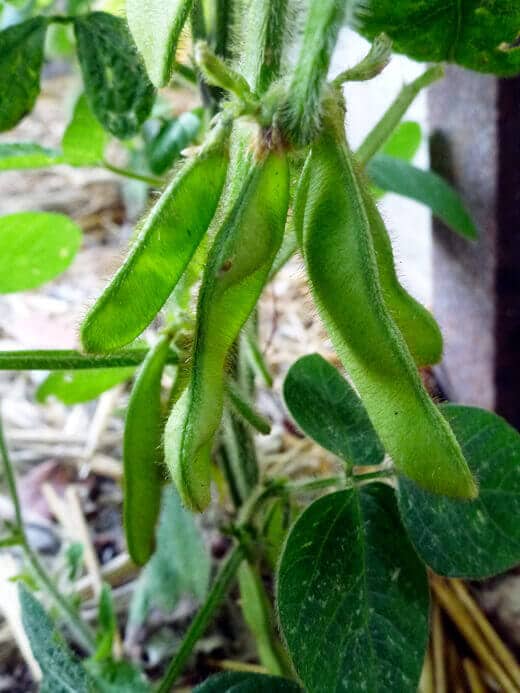
On the other side of the trellis is a cluster of Envy edamame plants. These looked a little weak in the beginning as well, but since I fertilized them, the plants are looking stronger and all six of them are bearing pods.
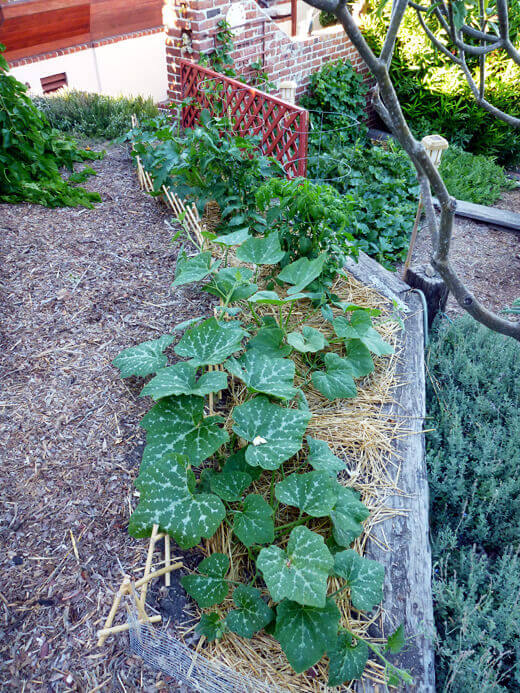
On the next level down from the main veggie plot are two more tomatoes and four zucchini. I love the variegated leaves of this Zucchino Rampicante — and I especially can’t wait for the first blossoms to fruit!
It might sound crazy knowing that I have 16 tomato plants this season (not counting the accidental tomatoes) — but I gave away as many seedlings as I could, still had more left over, and couldn’t bear to compost them. So I carved out space in the garden for them. I’m sure it was a very good decision.

Near the tomato and zucchini plot is our weeping mulberry tree. We are actually getting a fair amount of mulberries this year! I think it’s due to us getting rid of the squirrel that had been nibbling on the fruits before we could get to them.
We caught the little bastard scurrying inside the tree one afternoon, probably hoarding away tons of mulberries. I bet he was stocked up for the next several winters!
My fiancé tried to scare him out with the handle end of a shovel, shaking it around the branches, and next thing we knew — the squirrel flew 10 feet into the air (now I know where the term “flying squirrel suit” came from) and landed on that brick wall behind the tree. Actually, more like smacked into that wall. He lay lifeless for several minutes, not moving, face down on the ground. We both thought we (accidentally) killed the poor creature. We decided to leave him alone just in case he was still seeing stars, and when we checked on him again that evening, the body was gone.
We never saw that squirrel again.
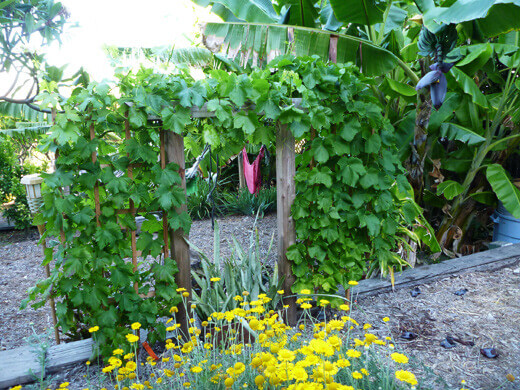
Our grapes have been vining and climbing rapidly. You can glimpse a bit of our hammock lounging area between the grape trellises.
A single bunch of bananas hangs down near the grapes, and in front, a bed of golden marguerites (a beneficial plant) are in full bloom.
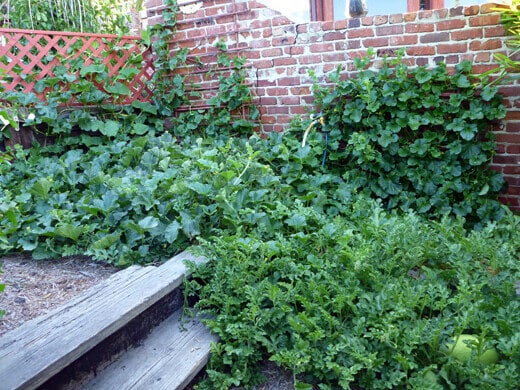
As you walk down toward the next garden level, you’ll pass the melon plants which have gotten enormous and are taking over the whole path. We let some of them climb and some of them sprawl. Ali Baba watermelon, Bidwell casaba melon, Petit Gris de Rennes French cantaloupe, and Sakata’s Sweet melon are all in there somewhere.
We even have a volunteer zucchini plant that is starting to climb up the red trellis on the left. Apparently zucchini seeds do not rot in the compost, as we learned this year.
After spreading our well-aged compost into all the raised beds, we started seeing hundreds of cucurbits springing from the soil. We saved one just to see what it would grow into… and whaddya know, we got more zucchini. I might have to start a neighborhood “U-Pick” of all our squash and zucchini this summer!
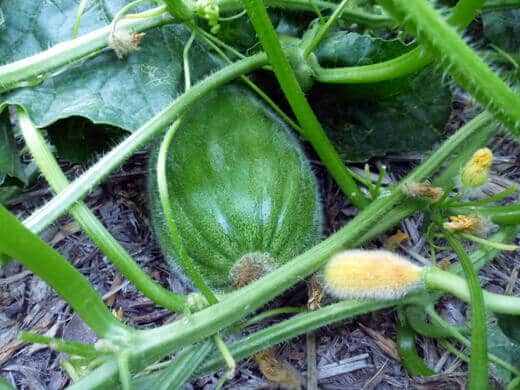
A baby Bidwell casaba melon, all furry on the outside.

The first pomegranate!
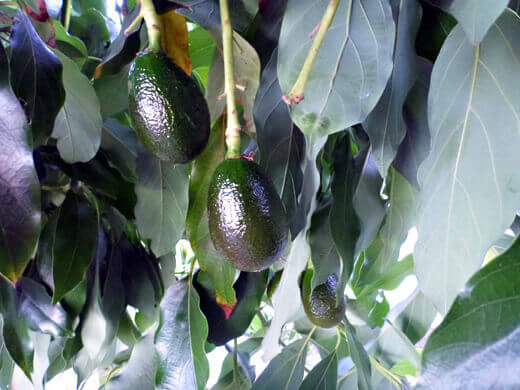
And avocadoes! I’m seeing many more on the tree this year after not harvesting a single one last year — again, because of that now-exiled squirrel. I have good feelings about this year though.
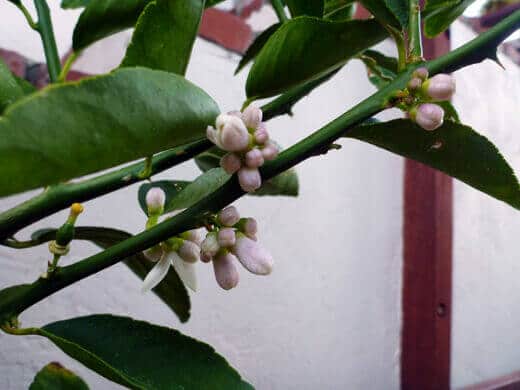
I hope every single one of these flowers blooms into a juicy lime! There’s already a tiny one fruiting on our dwarf Bearss lime tree, which we grow in a large Mexican maceta on the patio.
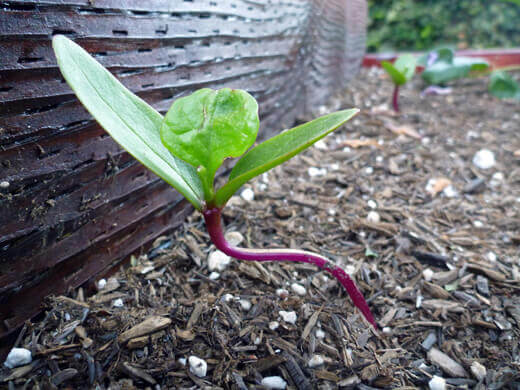
Right next to the lime tree is a new planter we just built, which houses Red Malabar spinach seedlings and Sequoia strawberry plants. The Red Malabar is already starting to vine and its gorgeous red stems will eventually climb over our white wall.

And finally, after what felt like forever and a day, one of my chile pepper plants has its first fruit. This is a Chinese Five Color pepper… only four more colors to go! Hopefully I’ll get more this summer!
















Hi have always loved gardening and i use rabbit manure . but a friend uses A;phalpha in hers and does just as great love your Garden
Thanks Tammy, please stick around for more. 🙂
I’ve noticed that you use straw as cover for soil. I’m assume that’s for heat and protection. Could you share how you manage this when you sow seeds outside directly? Also, how does it change the way you need to water plants? Finally, is buying straw in bulk reasonable cost-wise?
In the summer, I use straw mainly for moisture management (to keep the soil from drying out too quickly). Straw is also good for warming up the soil in winter (cold climates) or cooling down the soil in summer (hot climates).
I only mulch after the seedlings have grown a few inches and I’ve thinned them out. I spread the straw around the base of the plant, leaving a few inches between stem and straw, and water just the soil around the stem.
Can’t remember how much I paid for a bale of straw, but it’s quite reasonable considering a bale lasts a very, very long time!
Thanks Linda. And congratulations on your wedding! Keep up the great work; it’s very inspiring to read about all your garden adventures!
You’ve got quite the garden going on there!
I thoroughly enjoy reading your blog– the gardening, the travel, it’s so California.
Thank you Liz! And California’s such an awesome place, it’s hard not to take advantage of living here.